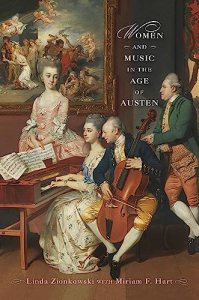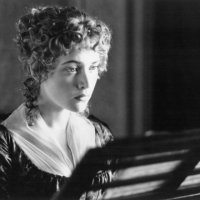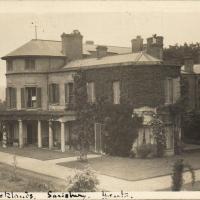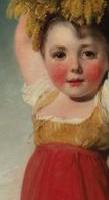Further Thoughts on Four Sisters
Today commences some time off work for me; I hope to do some catching up on research! To that end, I’ve been reading letters from the 1790s, specifically, at the moment, letters of Sarah Smith to her daughter, the newly-married Eliza Chute (Mrs William Chute of The Vyne).
In looking for more information on Maud Tomlinson Berkeley (my latest book purchase: Maud: The Illustrated Diary of a Victorian Woman, edited by Flora Fraser [I’m dying to know where the ORIGINAL diary is…]), I came across the book Victorian Honeymoons. Dipping into it online (UVM has a copy), I saw much about the honeymoon of Effie Grey and John Ruskin. Since John never, in Effie’s words, made her “his wife”, one concludes that other wedding nights could not be half so disastrous.
In truth, though, I can never know the intimate thoughts of Eliza Chute on this most momentous, and highly personal, aspect of life.
But, musing on such moments, the thought struck me: here, in one family of four girls, we have four case-studies in the various dilemmas life offers:
- Maria, the eldest, undoutedly “married well”: A young man seemingly enamoured of her; with prospects of a title and a large landed estate (or two…. ). A catch worthy of being in the same league as Mr Darcy of Pemberley; only Lord Compton of Castle Ashby was real once. There are letters describing Maria’s anxiety for Lord Compton (as he was styled before his father’s death in 1796); some relating to his duties with the Militia, some relating to illness. Maria produced, in the end, the traditional “heir” — but in her case there was no “spare”: her first-born and third-born sons died within a short time of their births. Only her second baby (Spencer, later the 2nd Marquess of Northampton) and her fourth (Elizabeth, later Lady Elizabeth Dickins) survived. She had no further children, though I’ve no idea whether there were further pregnancies. Letters describe Maria as being rather quiet, liking her domestic comforts, being very interested in plants. She was adept at painting botanicals, for a few survive in the (public archive) Royal Horticultural Society.
- ASIDE: Emma Smith, Maria’s sister, has a “gallery” on this RHS homepage; best way to bring up all the works of the Smith girls: search the term MEEN — Margaret Meen was their instructor.
- Eliza, the recipient of the Sarah Smith letters housed at the Hampshire Record Office, was married to another gentleman of means, William John Chute, a Member of Parliament for Hampshire. There were no children forthcoming for the Chutes, and one letter — annoyingly missing its concluding page(s)! — seems to hint that Eliza and William Gosling might consider a loan of one of theirs… It is rather supposition, but based on good fact: the Chutes “adopted” William Chute’s cousin Caroline Wiggett when she was a mere toddler. The Vyne estate, however, passed to William Chute’s younger brother, Thomas (unmarried) and after Thomas’s death to Caroline Wiggett’s brother William who adopted the name Wiggett-Chute. He gained possession of Thomas Chute’s Norfolk estate, but possession of The Vyne had to await the death of Eliza Chute in 1842.
- ASIDE: Caroline Wiggett’s story has been hypothesized as a source behind the “adoption” of the character Fanny Price in Jane Austen’s Mansfield Park. More on the Chutes, especially William are found in James Edward Austen Leigh’s A History of the Vine Hunt. Caroline Wiggett Workman left “Reminiscences” of her youth.
- Augusta, the third daughter, concerns us much – for she was the prolific mother of nine, including our Emma Austen Leigh. Augusta has left many letters, and several diaries; her character comes across as formidable, at least in her later years. She lost her husband, Charles Smith of Suttons, when pregnant with her youngest daughter Maria. I often refer to her as “Mamma,” but she is both matriarch and young woman – for her 1798 marriage is documented in one of the earliest diaries I have yet seen. She also, according to one neighbor, held the ignominious position of being Charles second wife — and she did not go down well with this woman who remembered and much preferred Wife Number One! Augusta produced an heir not only for her husband’s estate, but also for her uncle Drummond Smith’s title of baronet. She may have vacated Suttons following her son’s second marriage, but she never gave up her parental concerns – and her advice was sought by all her children until the day she died.
- ASIDE: the diary comments about young Augusta c1803 are to be found in the valuable biography of William Smith of Parndon {no relation} entitled Progress by Persuasion by Hazel Lake and Jenny Handley.
- Emma, the “maiden aunt”. The one Erle Stoke sister who never married. After the death of Sarah Smith (1810), Emma and Joshua were left together at Stoke. On Joshua’s death (1819) Emma seems to stay separate from her sisters. At some point she begins living at a place called Glenville, near Southampton. Looking through the records of the Hampshire Record Office, I was rather pleased to see that Emma Austen Leigh saved some newspaper clipping that referenced “the Value of Maiden Aunts” — she had had the pleasure of three such women in her life: “Aunt Emma” (Emma Smith, her mother’s sister); “Aunt” (Judith Smith, her father’s sister); “Aunt Frances,” Lady Frances Compton, Uncle Northampton’s sister. Emma is a slight enigma, awaiting more information. She’s the petulant youngest sister in early letters, and the aloof “maiden aunt” abroad in later letters. A fascinating transformation that I have certain thoughts about; confirming or denying my suspicions will be for a future endeavor.
- ASIDE: Emma Smith was a prolific artist, and delighted in her stays abroad. A mystery as to the identity of someone called MACKLIN, especially as there exists in Wiltshire the so-called Macklin Album, where the initials A.A. Macklin have been interpreted as meaning an Amelia Macklin. Same person as the one referred to in an 1824 letter? {note: the images for the Macklin Album}
In short, though, several aspects of women – from the titled widow down to the well-heeled spinster – are represented in the Four Smith Sisters of Erle Stoke Park. They will one day make for a fascinating study.


















Eastwick Park, Surrey | Two Teens in the Time of Austen said,
June 5, 2018 at 11:38 am
[…] wasn’t until I translated a French letter that I realized the part Eastwick played in the young lives of the four Sisters of Erle Stoke Park (which I really need to begin spelling Earl Stoke Park […]